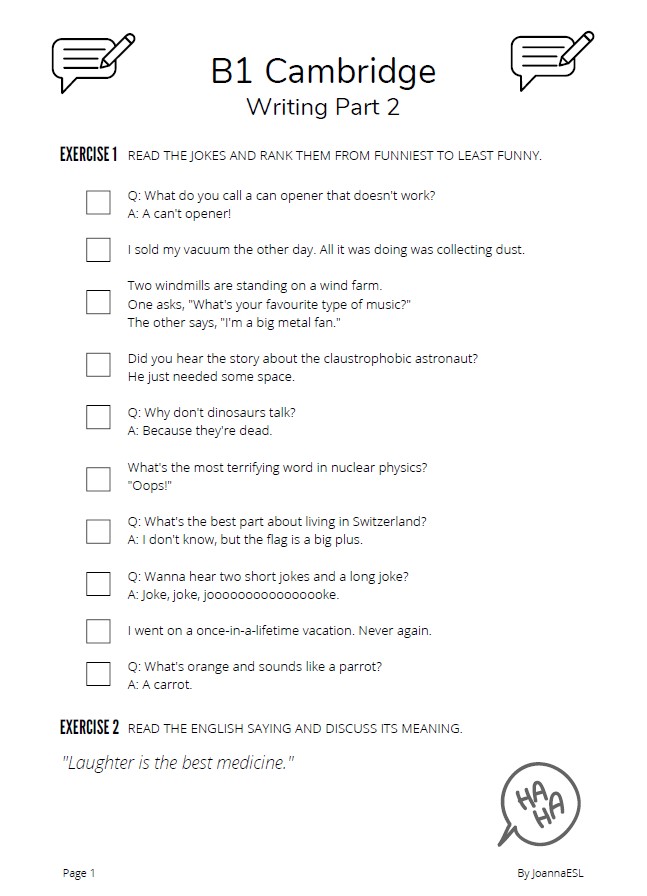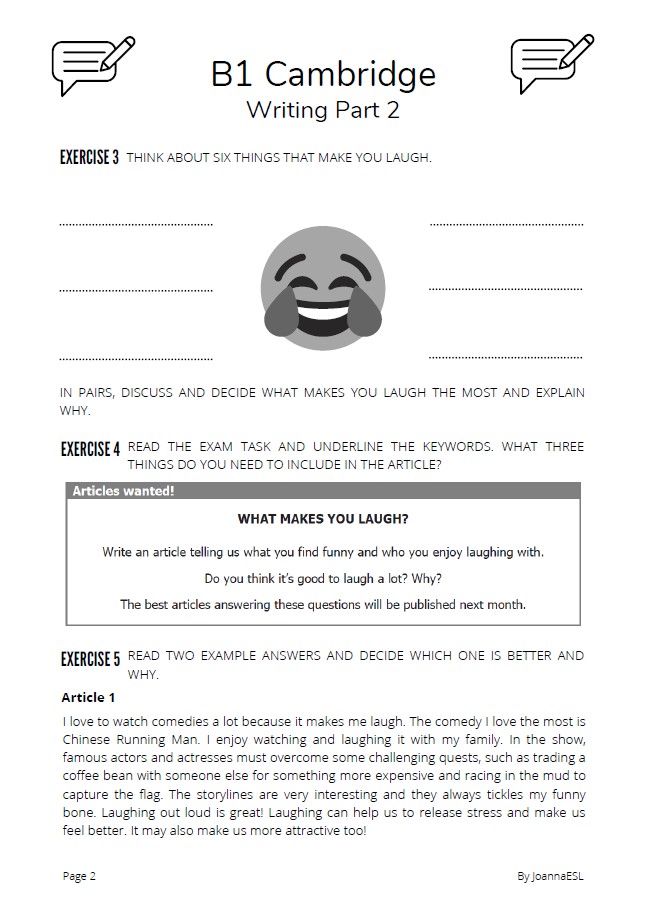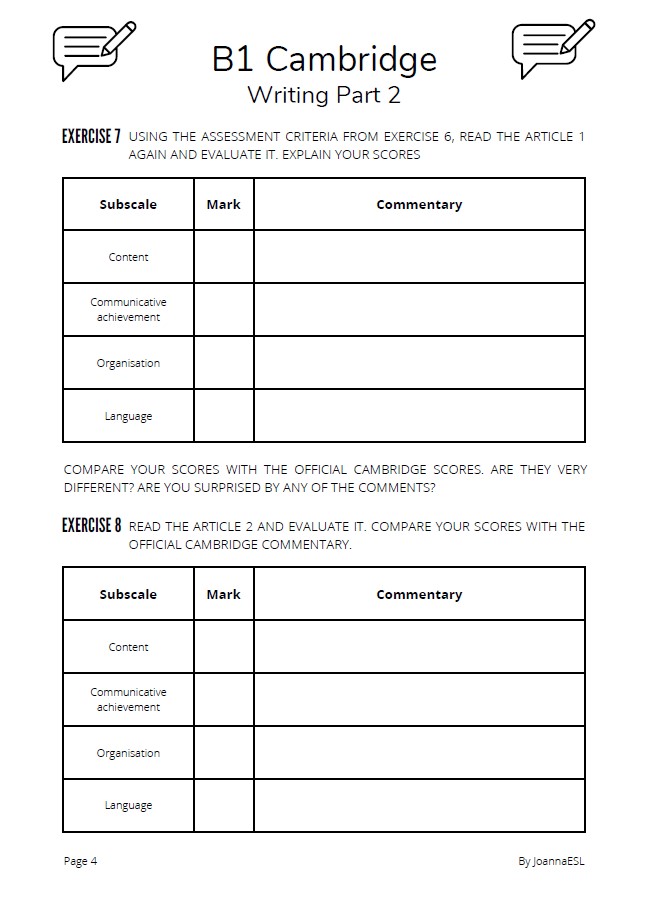Telling jokes is a thing of the past. Nowadays, people find amusement in comedies, pranks and endless cat videos on YouTube. Present students with a writing exam task and ask them to write an article explaining what makes them laugh and who they like to laugh with. All that while explaining the main points of the Cambridge Preliminary Writing Part 2.
Things that make us laugh are subjective – we all find humour in different things. For me, one of the funniest things must be either certain people, cat videos or good old dad jokes. I also find plenty of laughter inside my classroom. If you want to read and compare some of the best moments from my lessons, you should read my post Laugh it off! in which you can find some relatable ESL moments.
In Cambridge PET writing, students are asked to complete two tasks. Writing Part 1 is a compulsory task, in which students need to reply to a letter or an e-mail. You can find a lesson task and a step-by-step explanation in Cambridge PET – Writing Part 1. In this post, we will focus on Writing Part 2. In this part of the exam, students are asked to choose between an article or a story. This post is dedicated to an article, which can be found in the B1 Preliminary for Schools Handbook.
At the end of the post, you can find the lesson plan, worksheet and answers.



Start the class by giving your students one or two jokes each, depending on the group size. Students read them aloud and, if necessary, explain them (because all good jokes need to be explained!). The intention is to introduce students to dad jokes. All the jokes and so many more you can find on 175 Bad Jokes That You Can’t Help but Laugh At by Reader’s Digest. Here are some of the best ones which can be found on the worksheet.
What do you call a can opener that doesn’t work? A can’t opener!
I sold my vacuum the other day. All it was doing was collecting dust.
Two windmills are standing on a wind farm. One asks, “What’s your favourite type of music?” The other says, “I’m a big metal fan.”
Put students into pairs and tell them to order the jokes from the most to the least funny. Reveal their rankings and check the differences between their sense of humour. Proceed by writing a well-known English saying Laughter is the best medicine. Discuss what this saying means to students and whether they agree with it. Do they have a similar saying in their L1?
I love including the Speaking Part 3 discussion in almost most of my Cambridge exam preparation lesson plans. It is a great way of creating your task and generating meaningful and engaging discussions. In this case, propose a question that you can find in the exam task What makes you laugh? As a group, think of six different things that make you laugh and write them down. Divide students into pairs and ask them to discuss each prompt and choose the one that makes them laugh the most. Elicit some answers and discuss why these particular things make them laugh. Below you can find what the task should look like and some sample prompts.

Follow this part by introducing the rules of Writing Part 2. Read the exam task and underline the keywords. Proceed by reading two sample answers which can be found in the B1 Preliminary for Schools Handbook. Give them some time to think about the answers and discuss which one is better and why. Introduce students to the writing assessment criteria and point out that it is divided into four different subscales: content, communicative achievement, language and organisation. Briefly go over each one and explain them. You may also print it out and ask students to keep the assessment criteria for future reference.
If this is the first time going over the assessment criteria, analyse and assess one of the sample answers together. Underline any good and bad points and categorise them into different subscales. Together give and explain the score. Students work individually and analyse the second sample answer. Check the scores and compare them with the official examiner’s mark. Discuss how far off their scores are and if they are surprised by the official result.
It’s your students’ turn to write their articles! Whether you choose to do it as a part of the lesson or not, I always like to do the planning part in class, just to make sure that it becomes a habit and that in the official exam, students will spend 5 minutes organising their answers. Using the perfect sample answer (20/20 points!), students plan their answers and share them with the rest of the group.
At this point, you can either finish with general feedback or if you have more time available, you can give them 30 minutes to write their articles and finish with peer assessment. You need to add about 45 minutes more to the original lesson, but if this is the introduction to writing articles, it may be worth it to devote some class time to writing.
Click the link below to get the worksheet with the lesson plan and suggested answers. If you want to edit this worksheet and the lesson plan, you can also access it by going to my Canva file.
What and who makes you laugh the most? Do you think that sense of humour is universal? Do you think it is a good topic for an article?

1 thought on “Cambridge PET – Writing Part 2 (article)”